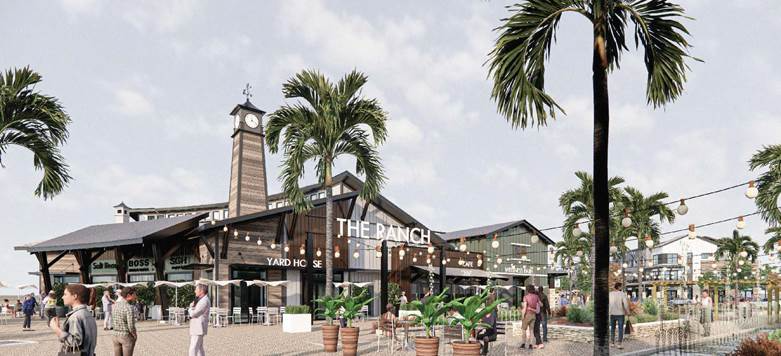RECAPTURING THE SPIRIT OF PLACE: KIVA CRAFTS CENTER REHABILITATION
- Arizona Contractor & Community
- Jan 30, 2024
- 2 min read
By Doug Sydnor
Part Cherokee and Scotch-Irish, Lloyd Henri Kiva New was an artist and educator who arrived in Scottsdale in 1946. Painter Lew Davis invited him to join other artists in an innovative venture called the Arizona Craftsmen Center in Old Town at the southwest corner of Brown Avenue and Main Street. There, artisans could make their creations, including painting, pottery, silversmithing, jewelry, and sculpture, watched by potential customers.

At the center, New made fabric silk screening and leather handbags. The venture was successful, helped by former First Lady Eleanor Roosevelt visiting the artists, purchasing items, and writing about it in her nationally-syndicated “My Day” newspaper column in 1946 and 1947.
Unfortunately, the center was destroyed in a fire in 1950. Afterward, New envisioned another arts center and purchased two agricultural parcels at the southeast corner of Craftsman Court and Fifth Avenue. New approached Frank Lloyd Wright, whom he had known since the 1930s, to design the center. Wright and his entourage met with New and suggested that he acquire additional property to the south. Unfortunately, New didn’t have the budget for that purchase, so Wright abruptly left.

Afterward, New hired architect Thomas Stuart “T.S.” Montgomery, who was known for his modern design sensibilities. Art patrons and ranch owners Anne and Fowler McCormick facilitated bank financing for New.
The resulting 23,115-square-foot design reflects six mid-century modern structures that are one-story except for a single two-story building. The Craftsman Court structures define a central courtyard accessed by five pedestrian-scaled outdoor breezeways. The architecture featured broad and low-pitched roofs with deep overhangs of natural wood soffits that shade tall display windows. Concrete masonry units with wood window and door frames compose the walls. Outside was a concrete hardscape, wood-framed seating units, a water feature, and shade trees, which included a row of olive trees that were windbreaks on the original farm.
More than 20 artists were provided a studio in a carefully choreographed tenant mix. Construction was completed in phases from 1955 to 1958. The Craftsman Court’s reputation helped launch Scottsdale as a nationally-known “artist’s colony," aided by fashion shows and arts and crafts festivals. Harper’s Bazaar, Town and Country, New Yorker, Saturday Evening Post, National Geographic, and Life magazines featured articles on the center.
To read the rest of this article, you are invited to purchase the digital issue here.
This article originally appeared in the bimonthly Arizona Contractor & Community magazine, May/Jun 2023 issue, Vol. 12, No. 3.








Comentarios